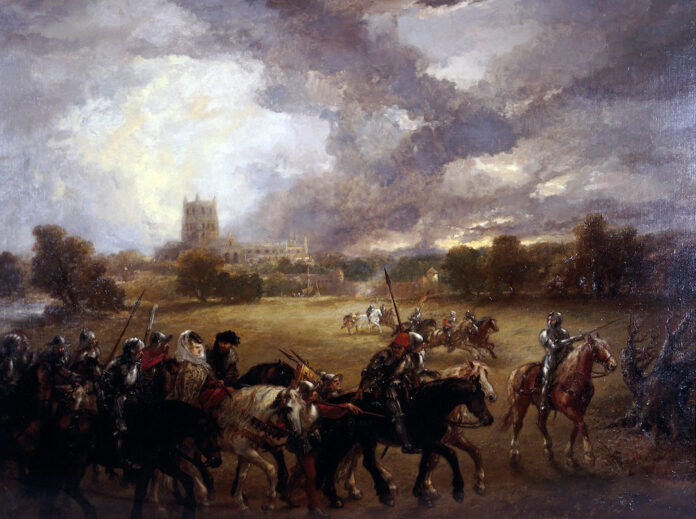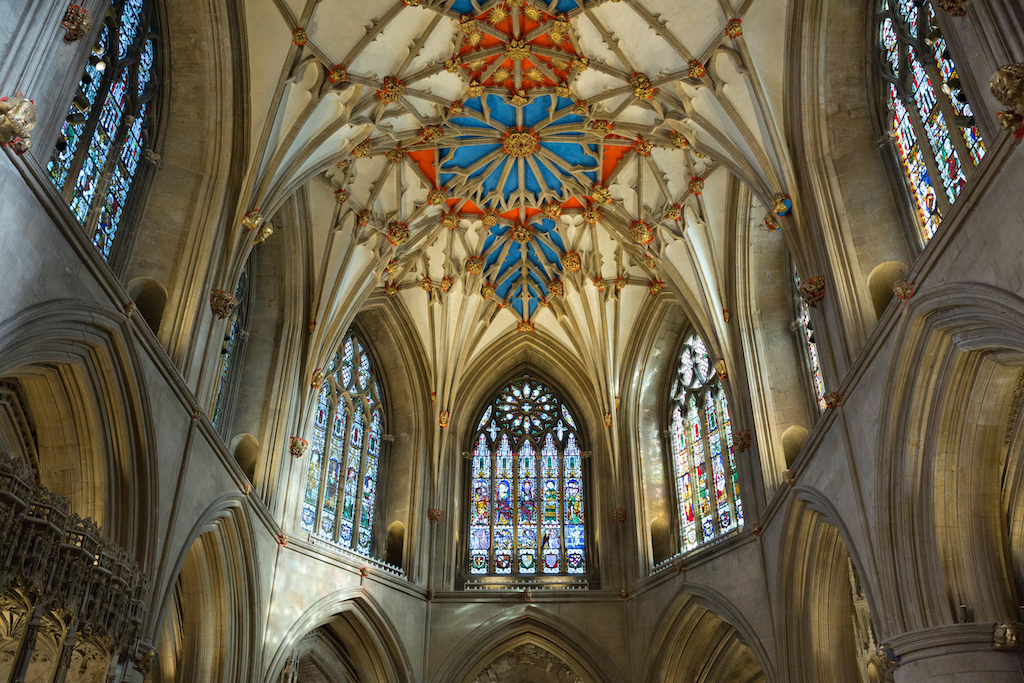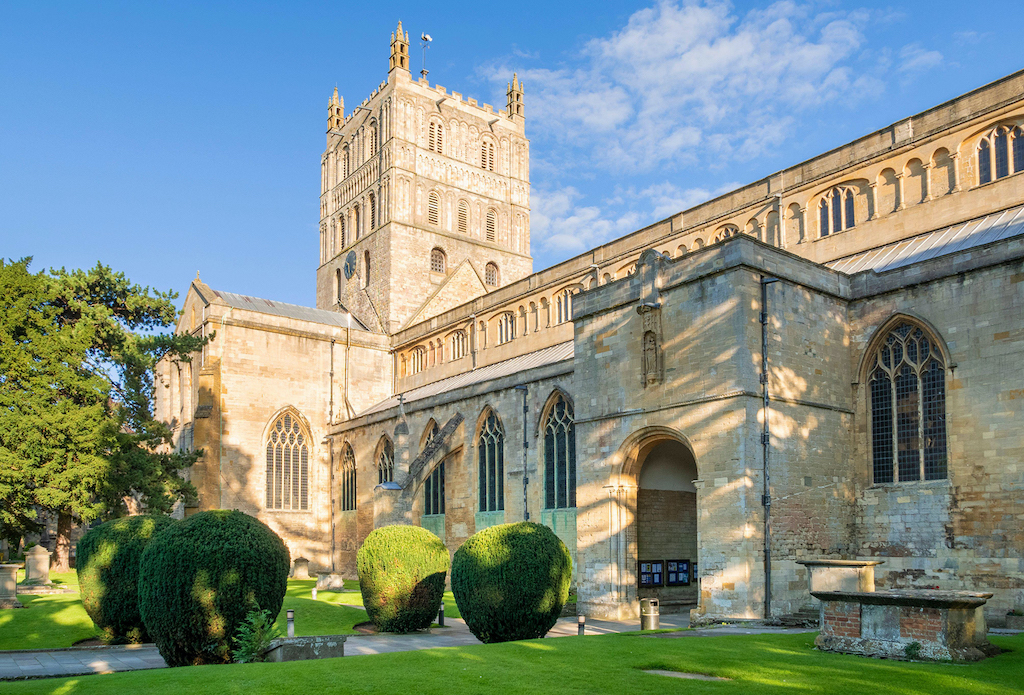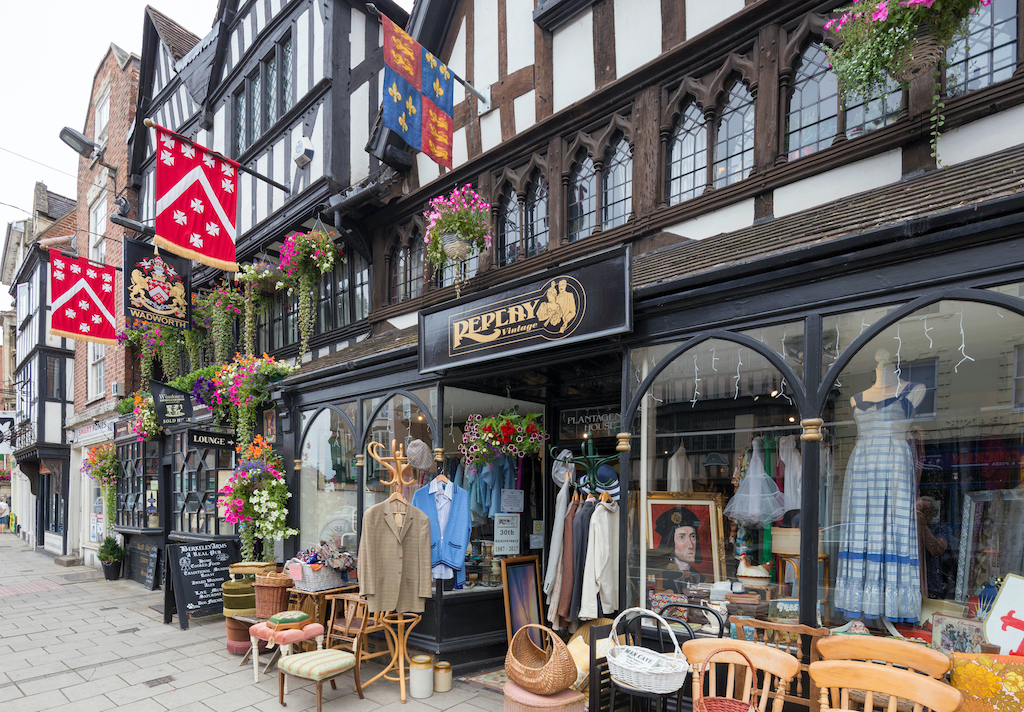
This year marks two historic anniversaries for Tewkesbury. But what put this small Cotswolds town on the map?
A simple brass plaque in the quire of Tewkesbury Abbey commemorates the burial of Edward, the Lancastrian Prince of Wales who was killed at the Battle of Tewkesbury in 1471. The son of King Henry VI and Queen Margaret, he had been “the only light of his mother’s eyes and the last hope of his race.” From the vaulted abbey roof above, the Sun in Splendour looks down, a motif of the House of York installed by triumphant King Edward IV as a symbol of his victory in the Wars of the Roses.

Hostilities between the two royal factions of Lancaster and York would flare up again, but the decisive battle of Saturday 4 May 1471 that concluded the first phase of their wars firmly stamped Tewkesbury on the map of history, and in this 550th anniversary year many commemorations are planned. The abbey is also celebrating 900 years since its consecration in 1121.

The back-story of the Wars of the Roses, named after the emblems of the red rose of the House of Lancaster and the white rose of the House of York, is well known, with the two branches of the Plantagenet royal family descended from the children of King Edward III (r.1327–1377) locked in a vicious struggle over the throne. The wars had erupted in 1455 and by April 1471 the pleasure-loving yet ruthless Yorkist Edward IV had gained the ascendancy with a victory at the Battle of Barnet. Weak-minded Henry VI was in captivity but his wife, the ‘she wolf’ Margaret of Anjou, had returned from exile in France with their 17-year-old son Edward intent on reclaiming the Crown.
Margaret planned to raise forces in the southwest of England, cross the River Severn at Gloucester, and join supporters gathered from Wales by Jasper Tudor before marching on London. However the city of Gloucester refused Margaret entry and on 3 May 1471, with Yorkist troops hot on their heels, the Lancastrians found themselves cornered where the Severn meets the River Avon at Tewkesbury. Exhausted from marching, they set up camp south of the town. A fight was unavoidable.
Early in the misty morning of 4 May the Lancastrians chose their ground as best they could and split into three units with their backs to the abbey and town: the Duke of Somerset, in overall command, took the right flank; Lord Wenlock and young Prince Edward shared the centre; the Earl of Devonshire took the left. Ahead of them were “fowle lanes and depe dikes, and many hedges, with hylls, and valleys, a right evil place to approche, as cowlde well have been devised.”

On his arrival Edward IV surveyed the scene and deployed his troops into three units too, with his brother the Duke of Gloucester to his left and his loyal Baron Hastings to his right. The Lancastrians outnumbered the Yorkists, c.6,000 versus c.3,500, but the Duke of Gloucester soon began to overpower the Duke of Somerset with “right-a-sharp shower of arrows and shot of gun”.
In a diversionary tactic, Somerset attacked the centre of the Yorkist army but was driven back into the sights of 200 mounted spearmen that Edward IV had fortuitously hidden in Tewkesbury Park’s woodland; the spearmen charged and cut Somerset’s men to pieces.
Furious that the main Lancastrian forces had not come to his rescue, Somerset accused Wenlock of being a traitor and, according to some reports, “strake [his] braynes out of his hedde.” In the mêlée that followed Lancastrians took flight and were slaughtered in their hundreds in Tewkesbury Park and the Bloody Meadow, or drowned in the River Swilgate. Prince Edward too was killed, dashing Lancastrian dynastic dreams. Those who hid in the town or sought safety within the abbey were rounded up and 17 of the most prominent Lancastrians, including the Duke of Somerset, were hastily tried for treason and executed on a scaffold on Church Street.
Margaret fled but was captured and imprisoned in the Tower of London on 21 May 1471, the very same day that her husband Henry VI, already a prisoner there, was murdered. Edward IV would now rule until his death 12 years later, when the second phase of the Wars of the Roses ignited, to end violently at Bosworth Field in 1485 with the accession of Henry Tudor.
“People are always surprised by how quickly everything happened in Tewkesbury,” says Richard Goddard, Chair of Tewkesbury Battlefield Society. “The forces arrived on the Friday and were gone on the Monday, leaving the townsfolk to clear up from the looting.” But Tewkesbury’s place in history became indelible, recalled today with an equine sculpture depicting Victor and Vanquished on the southern approaches to town and a waymarked battlefield trail around key locations; you can also join monthly walks led by the Battlefield Society.
This is an extract of an article printed in the latest issue of BRITAIN (March/April 2021).
To read the full feature, you can buy the issue here, or subscribe online to have every issue delivered right to your door.





 © 2024
© 2024